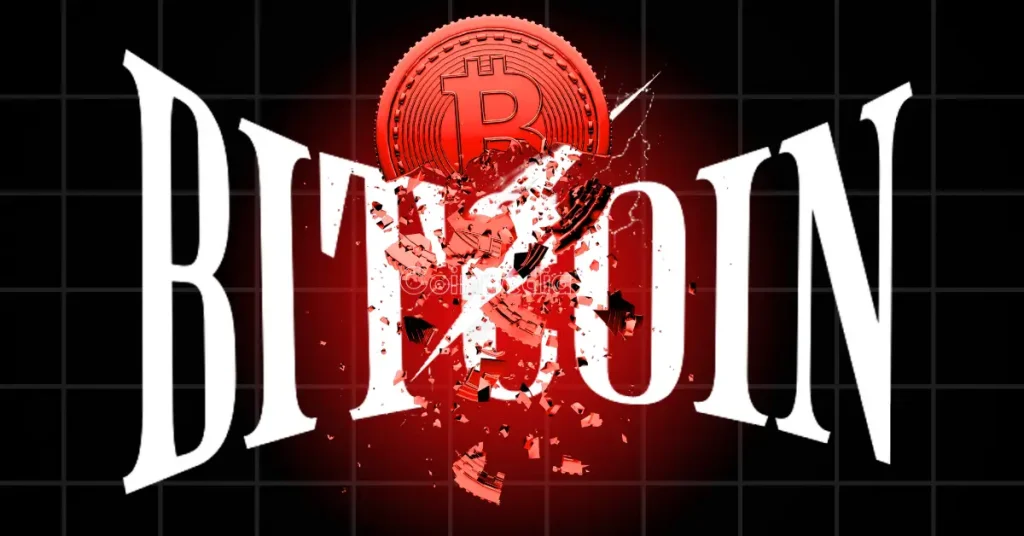Why Crypto Is Down Today: Traders React to Tariffs, Eye Fed’s Next Move
0
0

The post Why Crypto Is Down Today: Traders React to Tariffs, Eye Fed’s Next Move appeared first on Coinpedia Fintech News
The crypto market has hit a rough patch, slipping to $2.65 trillion after a 1.02% drop in the last 24 hours. Bitcoin, Ethereum, and XRP started the week strong, only to reverse course as global markets reacted to fresh U.S. tariff news. It’s been a shaky few days for traders – ups, downs, and plenty of uncertainty. Bitcoin’s market dominance now sits at 62.01% – and could rise further if the market starts to stabilize.
But beneath the surface, something interesting is brewing. With rate cuts expected later this year and key economic data just around the corner, the next big move might not be far off. Here’s what’s going on.
Why Are Rate Cuts Important for Crypto?
The U.S. Federal Reserve is expected to lower interest rates four times in 2025. Small cuts of 0.25% are planned for June, July, September, and December. Lower interest rates make borrowing cheaper, which often leads investors to put more money into riskier assets like cryptocurrencies.
Bitcoin, in particular, has a history of performing well during periods of falling interest rates. When the U.S. dollar weakens, Bitcoin becomes more attractive as a store of value and a hedge against inflation.
Big Crypto Holders Are Making Moves
In response to recent economic changes, large crypto investors – often called “whales” – have been moving major amounts of Bitcoin, Ethereum, and XRP to exchanges. This usually signals that they’re getting ready to sell.
After Donald Trump’s speech on new tariffs, one transaction moved 2,500 BTC in a single block. Ethereum deposits jumped to 80,000 ETH within an hour, while XRP transfers to Binance surged to 130 million—well above the usual 10 million per hour.
This wave of sell orders came during a time of economic uncertainty, as many traders chose to lock in profits and lower their risk. Now, the big question is whether the worst of the selling is over—or if another round could be on the way.
- Also Read :
- Crypto News Today 4th April : Trump Tarrif, Ripple XRP News, Fed Rate Decision, Ethereum News
- ,
Job Market in Focus
The spotlight is now on the upcoming U.S. non-farm payroll report, which will offer a fresh look at the state of the job market. If the data points to a slowdown, the Fed might feel more pressure to cut rates even sooner.
Slower economic growth often leads central banks to support markets with looser policies – something that tends to benefit Bitcoin and other cryptocurrencies.
Early Signs of Recovery?
By Friday morning, the market showed early signs of stabilizing. Bitcoin stayed above $83,100, Ethereum climbed back over $1,800, and XRP, Solana, and Cardano all posted small gains of around 2%.
With some of the selling pressure easing and investors adjusting to the idea of rate cuts, analysts believe a short-term bounce may be likely. If economic data continues to support easier monetary policy, a broader crypto recovery could be just around the corner.
It’s a waiting game for now, but in crypto, calm often comes just before the next big swing.
Never Miss a Beat in the Crypto World!
Stay ahead with breaking news, expert analysis, and real-time updates on the latest trends in Bitcoin, altcoins, DeFi, NFTs, and more.
FAQs
Lower rates make borrowing cheaper, boosting riskier assets like crypto. Bitcoin often rallies as a weaker USD increases its appeal.
If the U.S. job market weakens, the Fed may cut rates sooner, boosting Bitcoin and crypto demand as investors seek inflation hedges.
0
0
 Manage all your crypto, NFT and DeFi from one place
Manage all your crypto, NFT and DeFi from one placeSecurely connect the portfolio you’re using to start.






